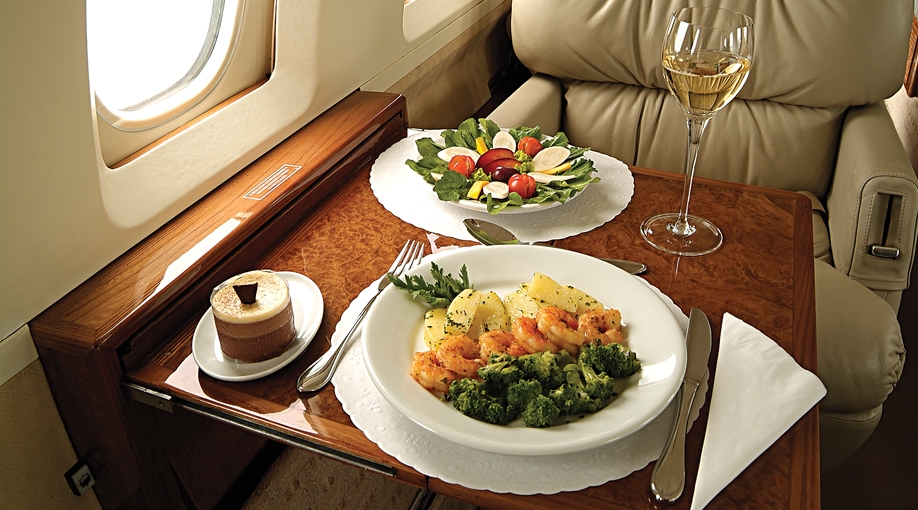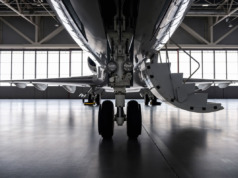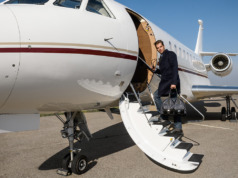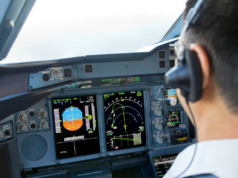
Food safety is a global concern, from the ways in which cattle are slaughtered, poultry are fed antibiotics, and fish are farm-raised. When it comes to the food served aboard your aircraft, food safety becomes a critically important and very personal part of your overall aviation safety program.
The Centers for Disease Control and Prevention estimate that each year, approximately one in six Americans (or 48,000,000 people) become ill, and 3,000 die of food-borne diseases. While the most severe cases tend to occur in the very old, the very young, and those with compromised immune systems, even otherwise healthy people can be vulnerable.
The three main types of food contamination are: biological (such as bacterial poisons), chemical (e.g. industrial processing chemicals and pesticides), and physical (foreign matter such as insects, stones, or other debris). Most food-borne illnesses tend to be mild and cause symptoms for only one to two days.
Do not expect a five-star, four-course meal aboard
a Lear 45. Stick to a sandwich tray.
However, can you imagine how illness could affect your entire senior staff traveling to a Board meeting? Or your top executive with your most important client? What if both pilots became ill in the cockpit, and barely were able to fly the aircraft?
In addition, food sabotage is an unlikely, but real, possibility.
While ordering and handling catering for your aircraft is the responsibility of your crew, it is your responsibility to hire a staff or an outside firm that is properly vetted, so as to ensure your safety, and that of your staff, clients, and family. Each country, state, and municipality has differing rules and practices for licensing caterers. You definitely do not want to encounter hair in your food, from an unlicensed caterer working out of his garage. (Yes, this really happened to a Fortune 500 executive.)
How can you keep yourself safe and healthy?
- Follow best practices –You or your staff should know how to order catering globally, and how to be sure the catering you order is secure. You or they must know how to keep safe temperature zones in aircraft storage compartments. Cross-contamination of tainted food can occur in the transportation process to the aircraft, in galley storage compartments, on the counters in the galley — as well as in your cabin dining area. Pay close attention to the length of time your meal is in front of you, and never allow perishable food items to remain in a non-chilled environment for four hours or longer.
- Understand your aircraft’s limitations — The aircraft’s galley and cabin size limit the choice of food and its proper and secure storage. Some foods you may enjoy on the ground — such as raw clams or oysters on the half shell — will not be available aboard your aircraft. Other foods, such as raw meat and seafood, eggs and dairy products, sliced melon, leafy green vegetables, berries, and mushrooms, will need special handling. Crème brûlée cannot be prepared in the air, since open flames and aircraft do not mix. Do not expect a five-star, four-course meal aboard a Lear 45. Stick to a sandwich tray.
- Secure your safety by guarding your privacy — Provide the caterer with only enough information to enable billing. Instruct your staff never to divulge the names of the passengers or the aircraft owner. An unscrupulous employee of the caterer or of the FBO might have a personal vendetta against you, your company, or your company’s practices, such as the fact that you’ve recently closed a local plant site or office, or had to lay off workers. Poisoning is rare, but unfortunately, not unheard of.
Implementing these three steps — as well as maintaining and encouraging good communication with your trusted staff — will help to ensure your well-being and safety. BAA
Susan C. Friedenberg, President & CEO, Corporate Flight Attendant Training & Global Consulting, began her aviation career in 1970, flying for American Airlines and Capitol Air, then worked for 31 years as a corporate flight attendant.




